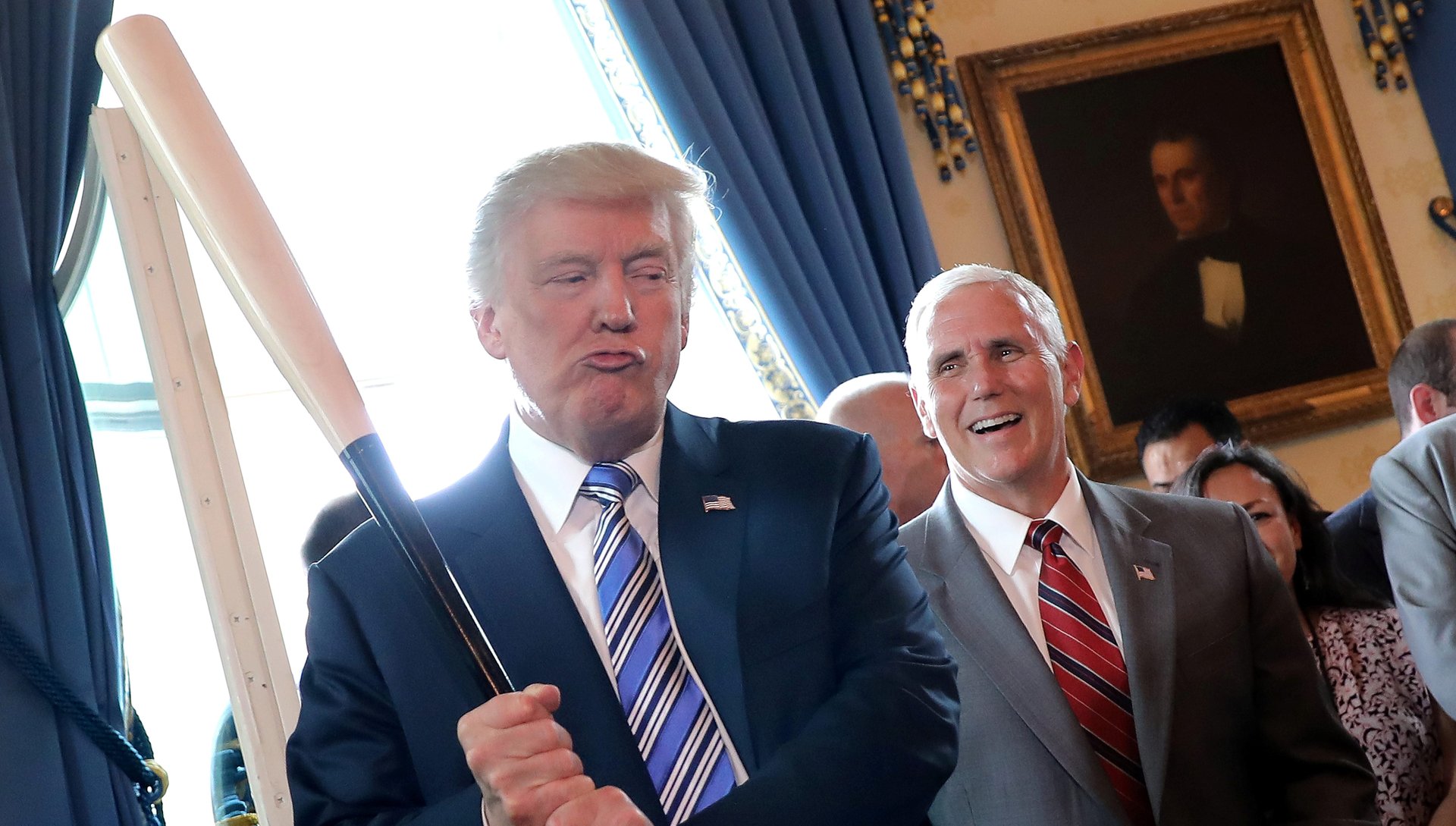Trump wants to make Nafta more like the TPP, the trade deal he killed on his third day in office
One of the very first things Donald Trump did after becoming president was to pull the US out of the Trans-Pacific Partnership (TPP). Now, he wants to revive parts of the 12-nation trade deal—which he called “a potential disaster” last year—and put them into a renegotiated North American Free Trade Agreement (Nafta).


One of the very first things Donald Trump did after becoming president was to pull the US out of the Trans-Pacific Partnership (TPP). Now, he wants to revive parts of the 12-nation trade deal—which he called “a potential disaster” last year—and put them into a renegotiated North American Free Trade Agreement (Nafta).
On July 17 the Trump administration released a 20-page list (pdf) of its objectives for the Nafta renegotiation, which could begin as early as August. Many bear a striking resemblance to provisions agreed by TPP negotiators, experts and Trump opponents have pointed out. “The administration is planning to come to the table with watered down versions of TPP proposals,” said US senator Ron Wyden, a Democrat from Oregon.
The TPP was essentially a renegotiation of Nafta—one that that added nine more countries. It already addresses some of the biggest criticisms against Nafta, for example, the difficulty of enforcing its labor and environmental standards, or its lack of rules on digital trade and other issues that weren’t around when the original deal was struck at the end of 1993. More importantly, it’s already been agreed upon by both Canada and Mexico. So despite Trump’s scorn for the TPP, it makes sense that his administration would borrow from it.
Some key similarities between Trump’s new objectives and the TPP he scrapped include toughening labor and environmental standards and making those parts of the main deal—not “side agreements” as they currently are under Nafta. In theory that would make the standards easier to enforce, as violations would be subject to sanctions. The side agreements’ enforcement mechanisms are virtually toothless.
Trump’s wish list also features some kind of mechanism to prevent member countries from intervening in currency markets in order to make their exports more competitive. This is something China has done in the past, but it isn’t currently a problem in North America. This too was in the TPP, and the idea was to create a precedent and a template for future trade deals with countries that do manipulate their currency, said Chad Bown, a senior fellow at the Peterson Institute for International Economics.
But the administration’s plan also goes well beyond what was included in the TPP. For example, US trade officials are proposing to get rid of a Nafta rule, the “global safeguard exclusion,” that exempts Mexico and Canada (paywall) from any measures the US takes to protect domestic industries from foreign competition. They also want to do away with a dispute-resolution mechanism in which disputes are reviewed by an independent binational panel.
Presumably the goal of these moves is to give the US more leverage in trade fights. The first objective in the White House’s 20-page document is to reduce the US’s trade deficit with Mexico and Canada. Without the global safeguard exclusion and the dispute-resolution mechanism, says Bown, it could become “very easy for the United States (or Canada or Mexico, for that matter) to re-impose trade barriers.” That significantly weakens Nafta—which Trump originally wanted to abolish anyway.